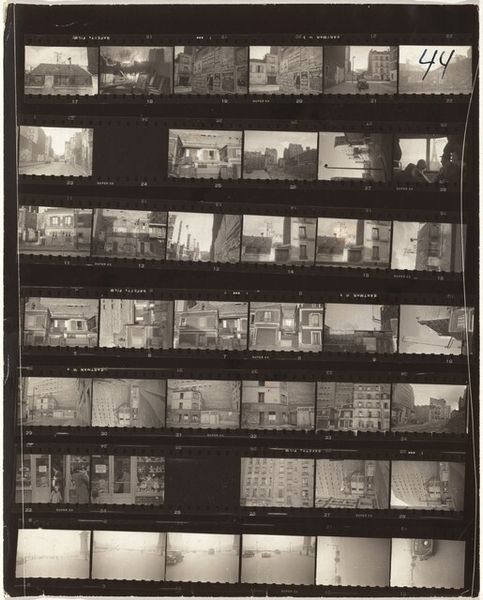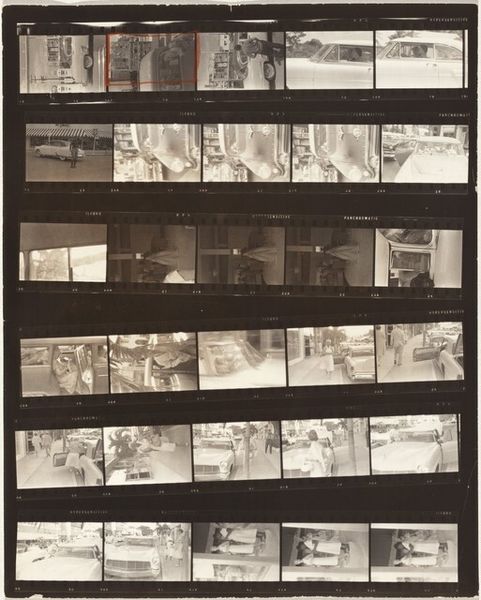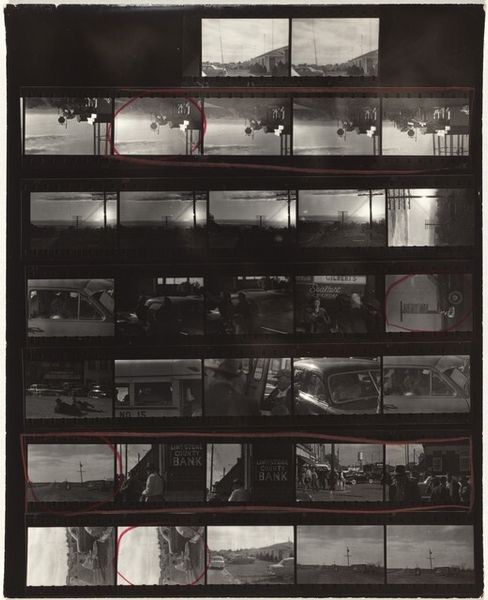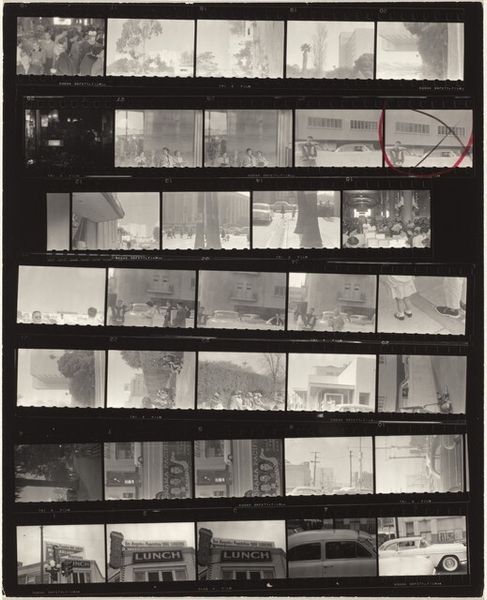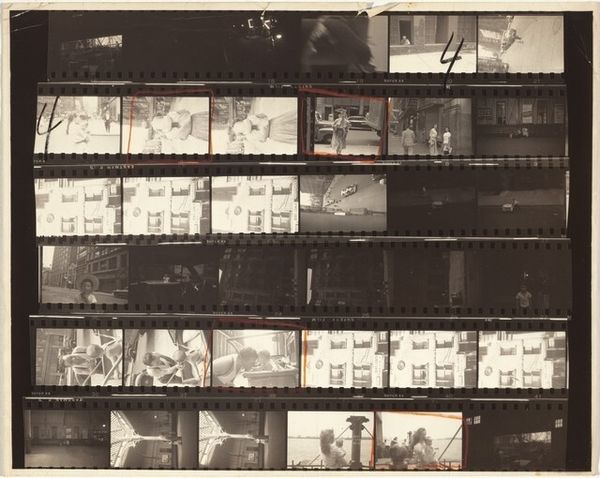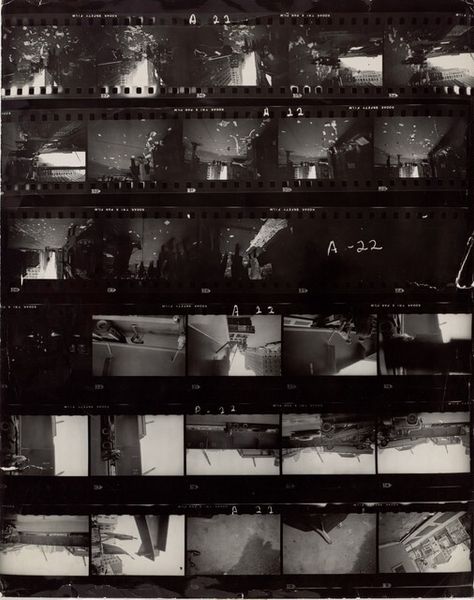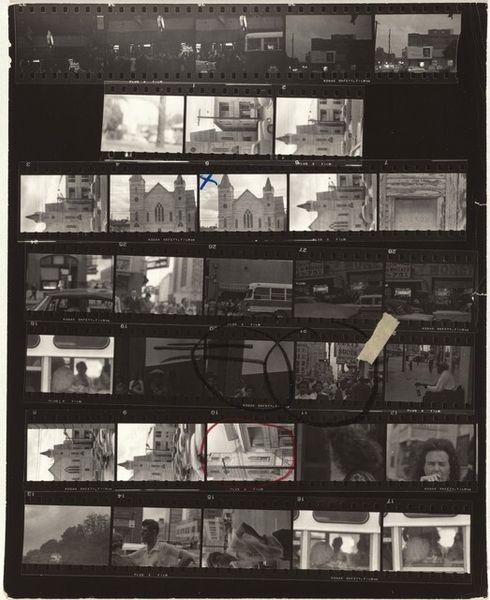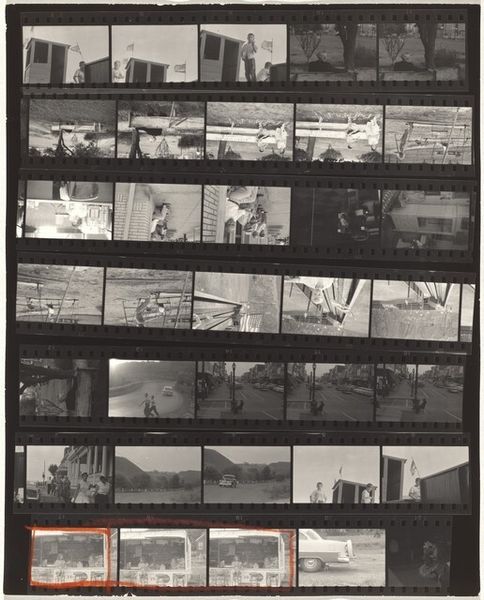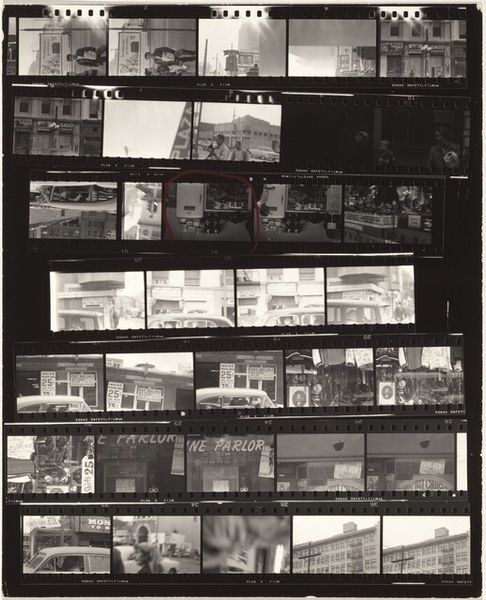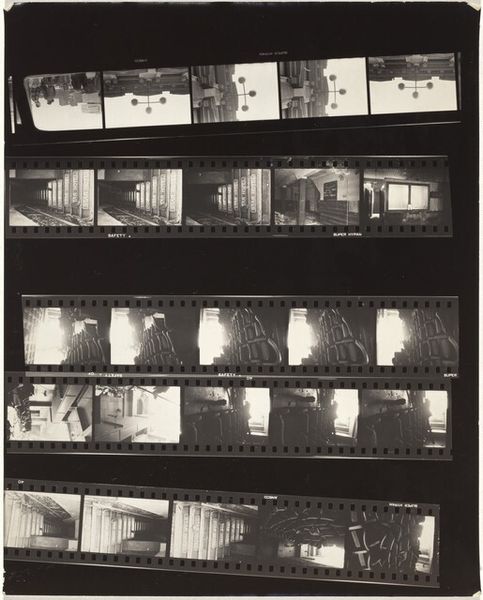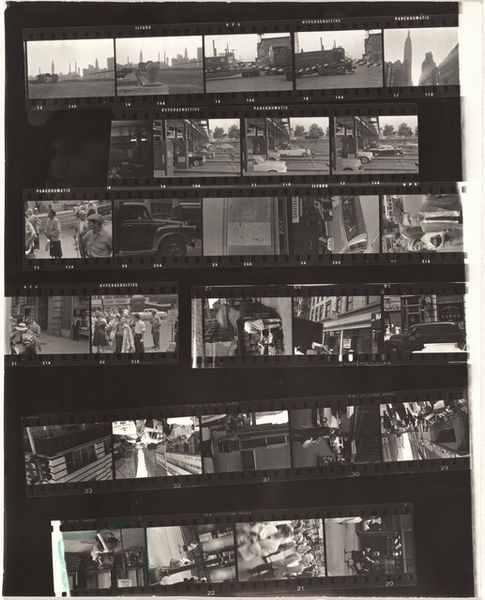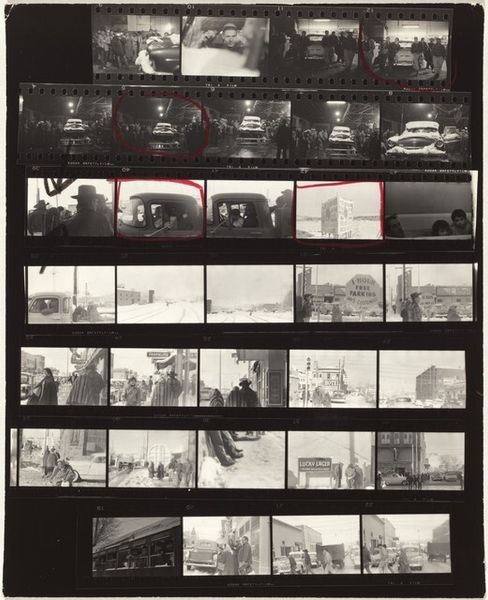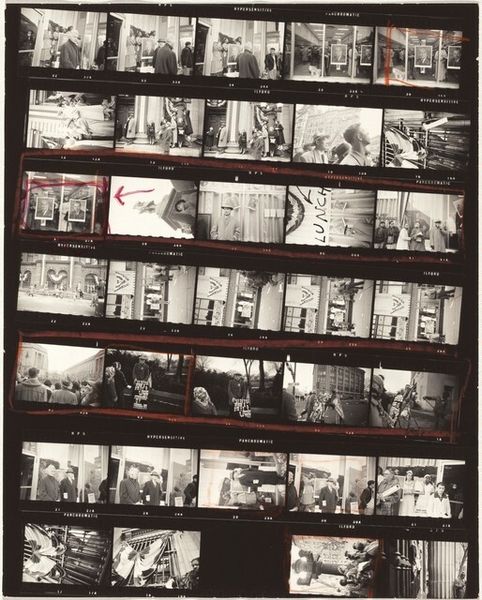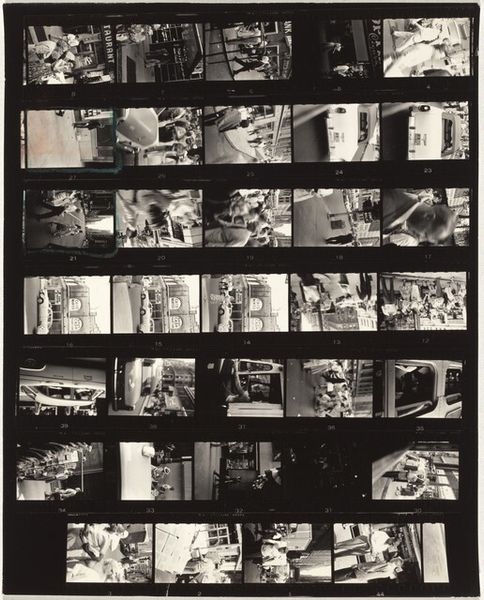
photography, gelatin-silver-print
#
street-photography
#
photography
#
gelatin-silver-print
#
cityscape
#
modernism
Dimensions: overall: 25.3 x 20.2 cm (9 15/16 x 7 15/16 in.)
Copyright: National Gallery of Art: CC0 1.0
Editor: This is Robert Frank's "Lines of My Hand 60/Chicago Loop no number," a gelatin silver print from 1959. It's a contact sheet, and the city scenes, captured in that gritty style Frank is known for, feel disjointed. How do you read this seemingly random collection of images? Curator: Frank’s contact sheets, like this one, are incredibly revealing. It’s not random at all; it’s a deliberate glimpse into his photographic process. By presenting the raw, unedited frames, Frank disrupts the notion of the decisive moment, instead highlighting the act of seeing, of searching. Editor: So it's less about the perfect image, and more about... the journey? Curator: Exactly. Think about the social context of 1950s America – the conformity, the emerging counter-culture. Frank, as an outsider, was capturing the alienation and unease simmering beneath the surface. The fragmented cityscapes, the off-kilter angles—they reflect that fractured reality. He presents a challenge to the constructed ideals that permeated the media and society at large. What do you make of that aesthetic decision? Editor: It's like he's trying to break free from the traditional, picture-postcard views, showing us the underbelly instead. The sequencing here adds to the feeling of disruption, perhaps of displacement, that was probably part of that time. It suggests we create meaning and are not spoon fed. Curator: Precisely. And that's where the title becomes relevant: "Lines of My Hand." The hand that holds the camera, the hand that selects, or in this case, *doesn't* select, becomes a direct link to the artist's subjectivity, to his presence in the work, even in its incompleteness. The artist offers transparency through presenting his failures and processes. Editor: I get it. So, it's not just a city portrait, it's a statement on photography, authorship, and even societal norms, all rolled into one. Thank you! Curator: And a testament to how the artist’s vision becomes inherently connected to both social and individual understanding. Thanks for prompting that conversation.
Comments
No comments
Be the first to comment and join the conversation on the ultimate creative platform.
